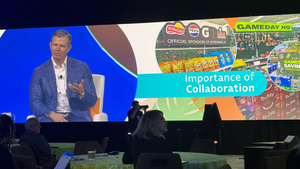Q&A with Jim Ethridge, National Cattlemen's Beef AssociationQ&A with Jim Ethridge, National Cattlemen's Beef Association
January 1, 2018
Jim Ethridge, executive director of channel marketing for National Cattlemen’s Beef Association, which manages retail-marketing programs for the Beef Checkoff, talks to Grocery Headquarters about what retailers can expect in the segment. What obstacles is the beef segment currently facing at retail? Jim Ethridge: Commodity pricing continues to rise placing increased pressure on the retailer to understand the price elasticity of their meat case as they work to manage the balance between price and demand. Beef continues to be the number one selling protein in the meat case adding to the importance for the retailer to find this balance in price and demand and continuing to look for new merchandising options to keep beef affordable for consumers. More retailers are merchandising beef in bulk and providing their consumers with information on how to cut great steaks and/or roasts at home. America’s beef industry is always working to pioneer versatile, value-added beef solutions that meet the full spectrum of operational needs and price points. We introduced the checkoff-funded Slice ‘n Save program to help retailers educate consumers on how to buy and cut boneless middle meat subprimals into steaks and roasts at home. Buying beef in bulk is a cost-effective way to create many meal options for a family; by cutting their own Tenderloin steaks, a shopper can save at least least $2 per pound. Is the economy still affecting beef sales? The continued volatility of the economy means more cautious consumer spending ahead, which is expected to continue to benefit retail over out-of-home food sales. No other protein is as craved as beef, and consumers will continue to rely on beef for its celebratory value and respond enthusiastically to popular Summer Grilling and Holiday Roast promotions. We’re here to help: The Beef Checkoff has all of the in-depth research, selling tools and merchandising materials needed to transform and pioneer the meat case. Resources such as brochures, point-of-sale, cutting videos and suggestions on popular bundles are available for retailers on BeefRetail.org. How is the growing Hispanic consumer market affecting the beef segment at the retail level? Hispanics represent 11% of households in America today and consume about 12% to 13% of all beef sold—making them a lucrative sales target for beef. Since they consume approximately 11.5% more meat per household than the general population, and their household size is growing more rapidly than Caucasian households, there’s especially strong incremental growth and sales potential for beef among Hispanics at retail. We offer the national Hispanic Beef Marketing Toolkit because we know that targeted POS marketing promotion can increase beef sales by as much as 43% on average, depending on how deeply engaged the retailer is with selling to Hispanics at the start of the program and which primal becomes the focus for results. What ways can retailers educate their consumers about cuts of meat and cooking instructions to boost sales? Retailers tell us that cooking insight is one of the most frequent requests they receive from customers—and we know that cut information and meal ideas go hand-in-hand. The checkoff-funded Easy Fresh Cooking program gives retailers the tools they need to offer consumers the information they crave—from cooking instructions, simple meal ideas and recipes, direction on how much to buy and nutrition information. As more consumers choose beef as an ingredient, there is greater demand for simple, one-dish meals ideas and time-saving options that make preparing beef quick and easy. This program is ideal for grocers that understand the value of offering shoppers meal solutions that are quick and easy, especially those looking to capitalize on the millennial shopper. Our research shows that millennials favor ready-to-eat foods and convenient, fresh beef dishes appeal to them. Millennials tend to use grocery retail as a re-imagined food court, sampling a variety of flavors and brands daily. Retailers can appeal to this audience by providing new and exciting global taste profiles. This demographic tires quickly of the same menu options and is constantly searching for interesting new flavors and cuisines to try. What affect is the current drought conditions having on production? What should retailers expect and how can they prepare for the future? There’s no question that drought is a factor impacting beef supply. It is limiting the farmers' and ranchers' abilities to expand the herd size. This year’s cattle inventory has dropped to the lowest numbers in 53 years. The shorter supply and stronger demand has affected the production chain from the rancher to the packer and is resulting in higher prices at the meat case. This makes retailers’ relationships with their suppliers even more critical. I would encourage retailers to continue to strengthen their relationship with their suppliers including increased communication around promotional activity.
About the Author
You May Also Like




